select Bibliography

RECENT REVIEWS
Furukubo-Tokunaga, K., Ludlow, Z. N., and Hirth, F. (2011). Memory Circuits in Drosophila. in “The Memory Mechanisms”, World Scientific, London, U. K., in press.
Furukubo-Tokunaga, K. (2009). Modeling schizophrenia in flies. Progress in Brain Research 179, 107-115.
Furukubo-Tokunaga, K. (2004). Homeobox and nervous system development. in “Encyclopedia of Neuroscience, 3rd ed.”, eds. Adelman, G. and Smith, B. H. Elsevier, New York.
ORIGINAL PAPERS
Pandey H., Bourahmoune, K., Honda, T., Honjo, K., Kurita, K., Sato, T., Sawa, A., and Furukubo-Tokunaga, K. (2017). Genetic interaction of DISC1 and Neurexin in the development of fruit fly glutamatergic synapses. npj Schizophrenia. 3, 1-11. doi: 10.1038/s41537-017-0040-6.
Furukubo-Tokunaga K, Kurita K, Honjo K, Pandey H, Ando T, Takayama K, Arai Y, Mochizuki H, Ando M, Kamiya A, and Sawa A. (2016). Visualization of DISC1-Dysbindin interaction in glutamatergic synaptic termini in fruit flies. Mol Psychiatry. 21, 1157, doi:10.1038/mp.2016.142.
Honda T, Lee CY, Honjo K, Furukubo-Tokunaga K. (2016). Artificial induction of associative olfactory memory by optogenetic and thermogenetic activation of olfactory sensory seurons and octopaminergic Neurons in Drosophila Larvae. Front. Behav. Neurosci. Jun 28;10:137. doi: 10.3389/fnbeh.2016.00137.
Furukubo-Tokunaga K, Kurita K, Honjo K, Pandey H, Ando T, Takayama K, Arai Y, Mochizuki H, Ando M, Kamiya A, and Sawa A. (2016). DISC1 causes associative memory and neurodevelopmental defects in fruit flies. Mol Psychiatry. 21, 1232-1243,doi:10.1038/mp.2016.15.
Honda, T., Lee, C.-Y., Yoshida-Kashikawa, M. Honjo, K., and Furukubo-Tokunaga, K. (2014). Induction of Associative Olfactory Memory by Targeted Activation of Single Olfactory Neurons in Drosophila Larvae. Sci. Rep. Apr 25;4:4798. doi: 10.1038/srep04798.
Ando, M., Totani, Y., Walldorf, U., and Furukubo-Tokunaga, K. (2011). TALE-class homeodomain transcription factors, Homothorax and Extradenticle, control dendritic and axonal targeting of olfactory projection neurons in the Drosophila brain. Developmental Biology 358, 122-136.
Mochizuki, H., Toda, H., Ando, M., Kurusu, M., Tomoda, T., and Furukubo-Tokunaga, K. (2011). Unc-51/ATG1 controls axonal and dendritic development via kinesin-mediated vesicle transport in the Drosophila brain. PLoS ONE 6, e19632.
Furukubo-Tokunaga, K., Adachi, Y., Kurusu, M., and Walldorf, U. (2009). Brain patterning defects caused by mutations of the twin of eyeless gene in Drosophila melanogaster. Fly 3, 263-269.
Kurusu, M., Maruyama, Y., Adachi, Y., Okabe, M., Suzuki, E., and Furukubo-Tokunaga, K. (2009). A conserved nuclear receptor, Tailless, is required for efficient proliferation and prolonged maintenance of mushroom body progenitors in the Drosophila brain. Developmental Biology 326, 224-236.
Honjo, K., and Furukubo-Tokunaga, K. (2009). Distinctive neuronal networks and biochemical pathways for appetitive and aversive memory in Drosophila larvae. The Journal of Neuroscience 29, 852-862.
Wairkar, Y.P., Toda, H., Mochizuki, H., Furukubo-Tokunaga, K., Tomoda, T., and Diantonio, A. (2009). Unc-51 controls active zone density and protein composition by downregulating ERK signaling. The Journal of Neuroscience 517-528.
Sawamura, N., Ando, T., Maruyama, Y., Fujimuro, M., Mochizuki, H., Honjo, K., Shimoda, M., Toda, H., Sawamura-Yamamoto, T., Makuch, L.A., et al. (2008). Nuclear DISC1 regulates CRE-mediated gene transcription and sleep homeostasis in the fruit fly. Molecular Psychiatry 13, 1138-1148, 1069.
Toda, H., Mochizuki, H., Flores, R., 3rd, Josowitz, R., Krasieva, T.B., Lamorte, V.J., Suzuki, E., Gindhart, J.G., Furukubo-Tokunaga, K., and Tomoda, T. (2008). UNC-51/ATG1 kinase regulates axonal transport by mediating motor-cargo assembly. Genes & Development 22, 3292-3307.
Kobayashi, M., Michaut, L., Ino, A., Honjo, K., Nakajima, T., Maruyama, Y., Mochizuki, H., Ando, M., Ghangrekar, I., Takahashi, K., et al. (2006). Differential microarray analysis of Drosophila mushroom body transcripts using chemical ablation. Proceedings of the National Academy of Sciences of the United States of America 103, 14417-14422.
Honjo, K., and Furukubo-Tokunaga, K. (2005). Induction of cAMP response element-binding protein-dependent medium-term memory by appetitive gustatory reinforcement in Drosophila larvae. The Journal of Neuroscience 25, 7905-7913.
Adachi, Y., Hauck, B., Clements, J., Kawauchi, H., Kurusu, M., Totani, Y., Kang, Y.Y., Eggert, T., Walldorf, U., Furukubo-Tokunaga, K., et al. (2003). Conserved cis-regulatory modules mediate complex neural expression patterns of the eyeless gene in the Drosophila brain. Mechanisms of Development 120, 1113-1126.
Kurusu, M., Awasaki, T., Masuda-Nakagawa, L.M., Kawauchi, H., Ito, K., and Furukubo-Tokunaga, K. (2002). Embryonic and larval development of the Drosophila mushroom bodies: concentric layer subdivisions and the role of fasciclin II. Development 129, 409-419.
Adachi, Y., Nagao, T., Saiga, H., and Furukubo-Tokunaga, K. (2001). Cross-phylum regulatory potential of the ascidian Otx gene in brain development in Drosophila melanogaster. Development Genes and Evolution 211, 269-280.
Kurusu, M., Nagao, T., Walldorf, U., Flister, S., Gehring, W.J., and Furukubo-Tokunaga, K. (2000). Genetic control of development of the mushroom bodies, the associative learning centers in the Drosophila brain, by the eyeless, twin of eyeless, and dachshund genes. Proceedings of the National Academy of Sciences of the United States of America 97, 2140-2144.
Nagao, T., Endo, K., Kawauchi, H., Walldorf, U., and Furukubo-Tokunaga, K. (2000). Patterning defects in the primary axonal scaffolds caused by the mutations of the extradenticle and homothorax genes in the embryonic Drosophila brain. Development Genes and Evolution 210, 289-299.
Leuzinger, S., Hirth, F., Gerlich, D., Acampora, D., Simeone, A., Gehring, W.J., Finkelstein, R., Furukubo-Tokunaga, K., and Reichert, H. (1998). Equivalence of the fly orthodenticle gene and the human OTX genes in embryonic brain development of Drosophila. Development 125, 1703-1710.
Nagao, T., Leuzinger, S., Acampora, D., Simeone, A., Finkelstein, R., Reichert, H., and Furukubo-Tokunaga, K. (1998). Developmental rescue of Drosophila cephalic defects by the human Otx genes. Proceedings of the National Academy of Sciences of the United States of America 95, 3737-3742.
Hirth, F., Therianos, S., Loop, T., Gehring, W.J., Reichert, H., and Furukubo-Tokunaga, K. (1995). Developmental defects in brain segmentation caused by mutations of the homeobox genes orthodenticle and empty spiracles in Drosophila. Neuron 15, 769-778.
Gehring, W.J., Qian, Y.Q., Billeter, M., Furukubo-Tokunaga, K., Schier, A.F., Resendez-Perez, D., Affolter, M., Otting, G., and Wuthrich, K. (1994). Homeodomain-DNA recognition. Cell 78, 211-223.
Qian, Y.Q., Furukubo-Tokunaga, K., Resendez-Perez, D., Muller, M., Gehring, W.J., and Wuthrich, K. (1994). Nuclear magnetic resonance solution structure of the fushi tarazu homeodomain from Drosophila and comparison with the Antennapedia homeodomain. Journal of Molecular Biology 238, 333-345.
Furukubo-Tokunaga, K., Flister, S., and Gehring, W.J. (1993). Functional specificity of the Antennapedia homeodomain. Proceedings of the National Academy of Sciences of the United States of America 90, 6360-6364.
Furukubo-Tokunaga, K., Muller, M., Affolter, M., Pick, L., Kloter, U., and Gehring, W.J. (1992). In vivo analysis of the helix-turn-helix motif of the fushi tarazu homeo domain of Drosophila melanogaster. Genes & Development 6, 1082-1096.
Qian, Y.Q., Otting, G., Furukubo-Tokunaga, K., Affolter, M., Gehring, W.J., and Wuthrich, K. (1992). NMR structure determination reveals that the homeodomain is connected through a flexible linker to the main body in the Drosophila Antennapedia protein. Proceedings of the National Academy of Sciences of the United States of America 89, 10738-10742.
総説、翻訳
本庄 賢、古久保 – 徳永 克男 (2008). 「ショウジョウバエ嗅覚連合学習における神経回路基盤」 実験医学 26 (12): 93-101.
本庄 賢、安藤徹也、古久保 – 徳永 克男 (2007). 「ショウジョウバエを用いたヒト精神疾患の遺伝学的研究」 細胞工学 26 (1): 28-34.
古久保 - 徳永 克男 (2002). 「ホメオボックス・ストーリー:形作りの遺伝子と発生・進化」 ワルター. J. ゲーリング 著、朝島 誠 監修、共訳、東京大学出版会。
安達 在嗣、古久保-徳永 克男 (2002). 「Otx 遺伝子の機能的互換性が示す脳の起源」 比較生理生化学 19 (2): 146-152.
古久保 - 徳永 克男 (1997). 「ショウジョウバエ脳形成の遺伝子支配」 細胞工学 16 (3): 355-366.

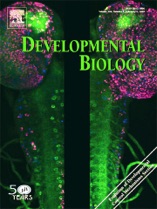
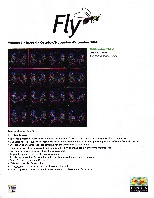
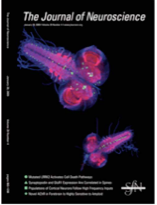
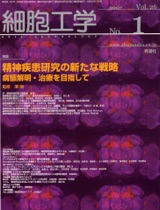
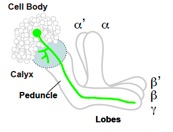
Structure of the adult mushroom body.
The adult mushroom body consists of two vertical and three horizontal lobes.The cell bodies of the MB neurons are located at the posterior-dorsal cortex and extend their dendrites into the calyx. While axons of the α’/β’ or α/β neurons bifurcate into the dorsal and horizontal lobes, axons of the γ neurons extend only horizontally (shown in green).
FURUKUBO-TOKUNAGA LABORATORY
INSTITUTE OF BIOLOGICAL SCIENCES, UNIVERSITY OF TSUKUBA, JAPAN
Update June 2018
